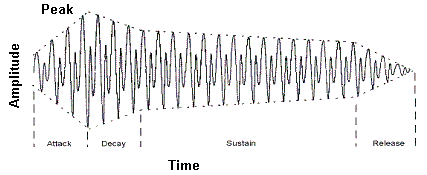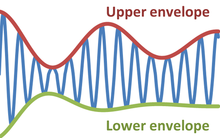An "envelope" and a "waveform" are two different things, an envelope is NOT "the outline of the peaks of all those squiggles"! The term "envelope" has a specific meaning, it refers to the collective phases of the production of a musical note (or acoustic sound), which are defined as ADSR: Attack, Decay, Sustain and Release. The term "envelope" was originally invented to standardise these phases specifically when designing sounds in synthesizers. The term "envelope" is today sometimes used more broadly, outside the realm of synthesis. Technically then, "the outline of all the peaks" of a waveform will only appear the same as the "envelope" if the waveform is a quite highly zoomed recording of a completely dry (without ambience/reverb) single note/sound. This scenario is very rare or completely non-existent in the completed master of many/most genres and furthermore, even if an actual envelope is evident in a mix, there is no one specific zoom level at which it would become evident, as none of the ADSR phases have a fixed time/duration, they could be anything from around a tenth of a milli-second to more than a minute in some cases.








